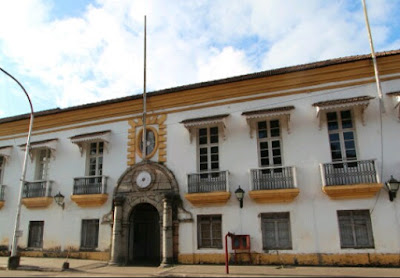Old Secretariat Building
The secretariat Building is a prominent landmark of the Panaji city. It is the classic example of Portuguese architectural style. however it was built by Adil Shah the Muslim ruler of Goa during 16th century. The Portuguese later modified the structure to build the fantastic rest house for the area's viceroy.
After Goa's Liberation from Portugal in 1961,Adil Shah's palace began new journey as the Goan state legislature building and became popular as Secretariat. The tiled sloping roofs, the balconies made of wood and the stone carvings give the secretariat Building an quintessential Portuguese tools. In the year 2000, the Goa Assembly moved to a new Building across Mandovi River.


Comments
Post a Comment